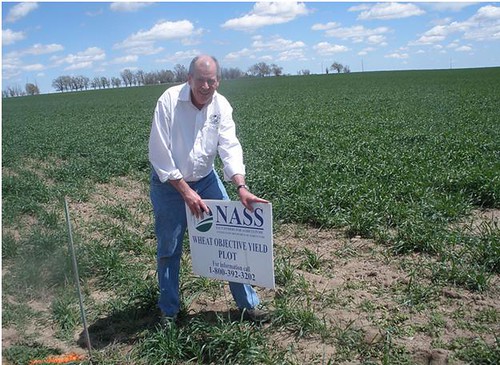
This post is part of the Science Tuesday feature series on the USDA blog. Check back each week as we showcase stories and news from the USDA's rich science and research portfolio.
When I was growing up on the farm in South Carolina, my family used a very simple method of estimating our production. As long as we planted the same acreage, we assumed that we were getting the same amount of crops at harvest time. But while this approach is still used on some farms, it is impossible to use these assumptions to get reliable state and national production estimates. So how does the USDA go about measuring the yields to get an accurate forecast for the annual crop production?
For more than half a century, the National Agricultural Statistics Service (NASS) has been monitoring and estimating crop production yields through the Objective Yield Survey. This survey - conducted monthly in the states that contribute the most heavily to total U.S. production of corn, soybeans, cotton, wheat and potatoes - allows us to make production forecasts based on actual counts and measurements made in the sample fields by representatives and on data obtained by laboratory analyses of the crops.
In the beginning of each growing season representatives choose two small plots in the field, to which they return every month during the growing season to monitor the growth progress. While in the field, representatives count the number of plants in the selected plots and the number of fruits on each plant. For corn, cotton and potatoes, the representatives also obtain the fruit weights. Later in the growing season samples from fields get sent to laboratories for additional analyses.
In these regional laboratories, NASS technicians weigh and count the sampled plant. For corn, wheat and soybeans, threshers are used to separate the fruits of the crops from the stems. Once complete, the moisture levels are measured and analyzed. These steps allow the technicians to accurately establish the maturity and the quality of the crops.
Once NASS statisticians have all of the data gathered from the fields and from the regional labs, they use this information to accurately forecast production yields both nationally and for each of the crop-growing states. These forecasts are made available to the public every month in NASS’s Crop Production report.


